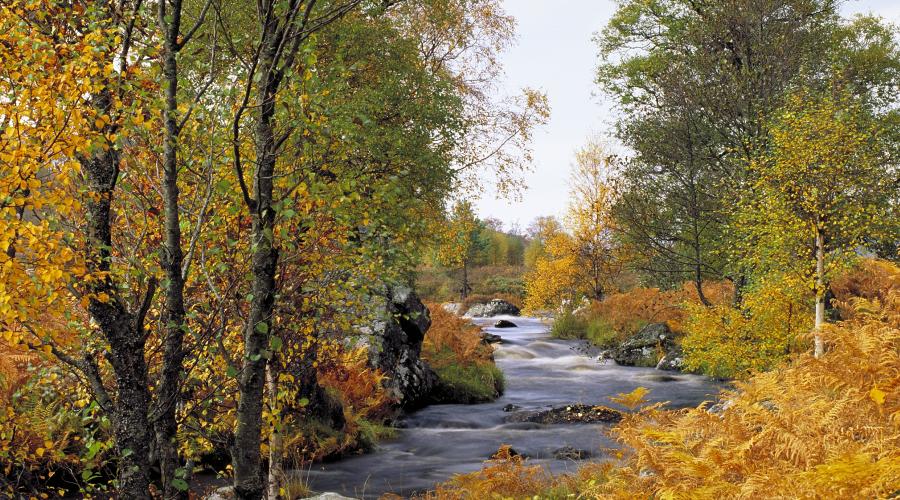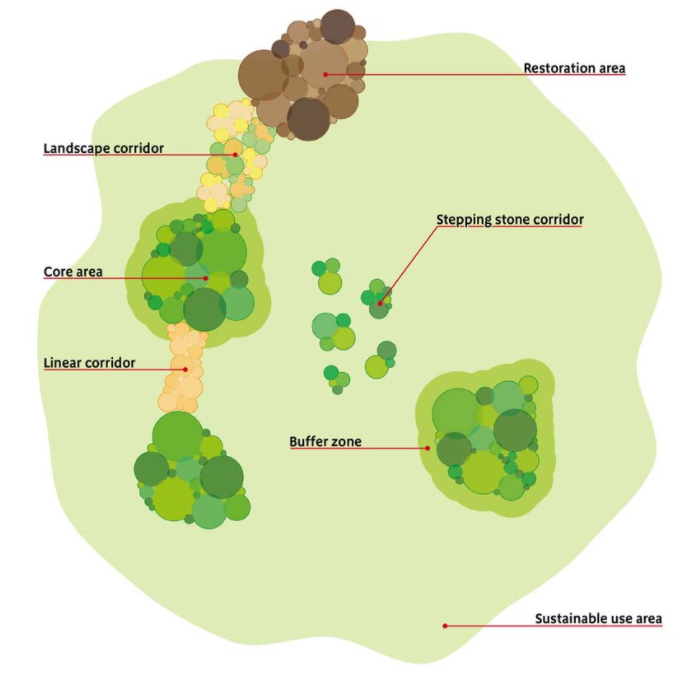
Nature Networks explained
Background on Nature Networks to help inform the co-design of Scotland's Nature Network framework
A Nature Network connects nature-rich sites, restoration areas, and other environmental projects through a series of areas of suitable habitat, habitat corridors and stepping-stones. As well as supporting regional and national approaches to protect and restore nature, they provide local benefits to wildlife and people.
Connectivity is an essential part of nature. It is necessary for functioning and healthy ecosystems, key for the survival of animal and plant species, and is crucial to ensuring genetic diversity and adaptation to pressures such as climate change.
To ensure Scotland's nature can thrive, nature-rich areas must be connected through a series of networks linking them all together.

The image shows a simplified landscape with discrete core areas, important for biodiversity, that are isolated from one another.
It shows various ways in which the health of these core areas, and so their positive contribution to biodiversity, can be increased. This can be achieved through two main means; improvement of the broader landscape within which they sit so it is more hospitable towards biodiversity and also, through strategic connections between these core areas for biodiversity. These come in two main forms, stepping stones of habitat that are important for biodiversity and allow the movement between sites or, corridors between the core areas that directly connect them. Corridors can take the form of linear corridors of similar habitat to those areas they wish to connect or, landscape corridors that are broader areas with a mosaic of different biodiverse habitats.
These strategic corridors or stepping stones form the backbone of Nature Networks.
The challenge
Nature Networks are a Programme for Government commitment and key delivery mechanism of the Scottish Biodiversity Strategy (SBS). They also contribute to Scotland’s Environmental Strategy and align with international targets in the Global Biodiversity Framework, and efforts such as the EU Trans-European Nature Network.
Nature Networks are embedded throughout the fourth National Planning Framework (NPF4) as a key means of ensuring positive effects for biodiversity from development.
Current state
Scotland is one of the most nature-depleted countries in the world. One of the key drivers for biodiversity loss is land-use change where, over time, habitats have been lost and increasingly fragmented. This fragmentation means that the remaining habitats are often isolated and unconnected and as a result they are less resilient, often in poor health, and struggle to support healthy populations of the species that normally rely on them. If we are to reverse declines in biodiversity, it is vital to address this by developing a robust network for nature.
Ambitions
Nature Networks will support the 30x30 target to help improve Scotland’s biodiversity and defend against the climate crisis.
Through a co-design approach, and a number of Nature Network workshops, a draft framework has been designed and developed to deliver Nature Networks across Scotland. The framework includes the vision, key principles, criteria, and approaches for protection, designation, governance, monitoring and management as well as policy linkages. It will be put for public consultation later this year before final publication.
This will be supported by a toolbox to support and enable those on the ground to implement local networks. Contribute local priorities and initiatives whilst ensuring that they contribute to a strategic, national nature network and principles. This will include protected areas, other effective area-based conservation measures (OECMs) and strategic landscape-scale projects.
Find out more:
Ecological networks (Protected Areas Review think piece)



